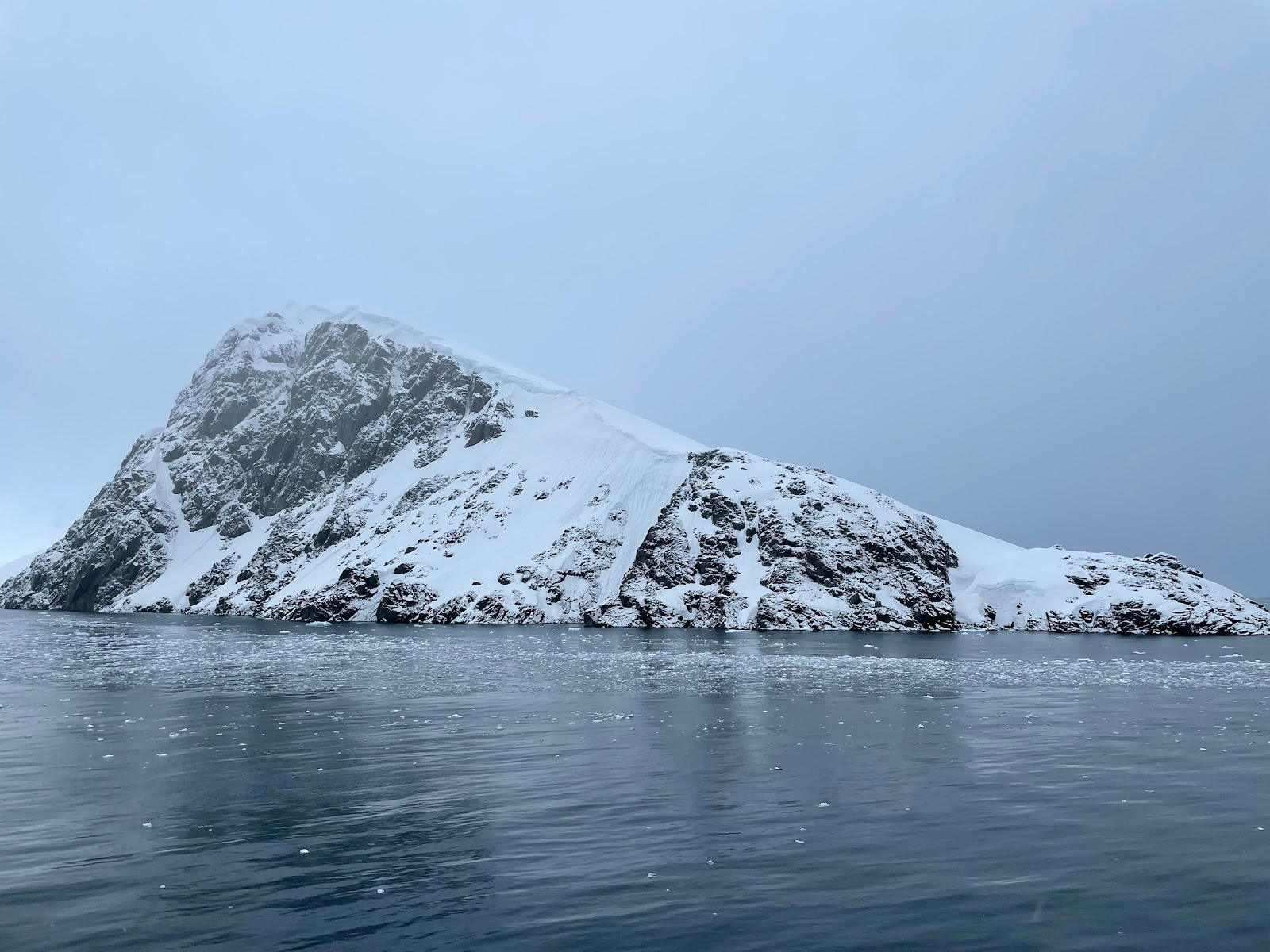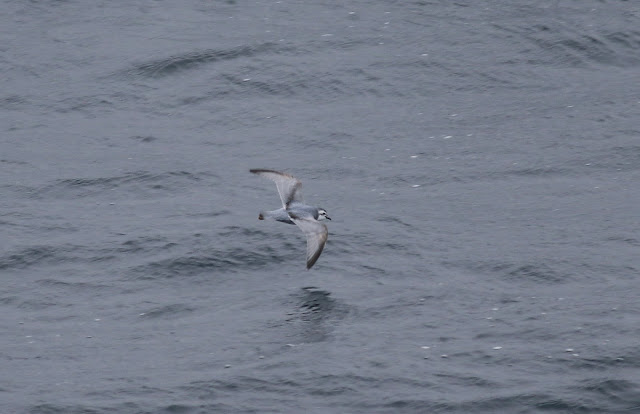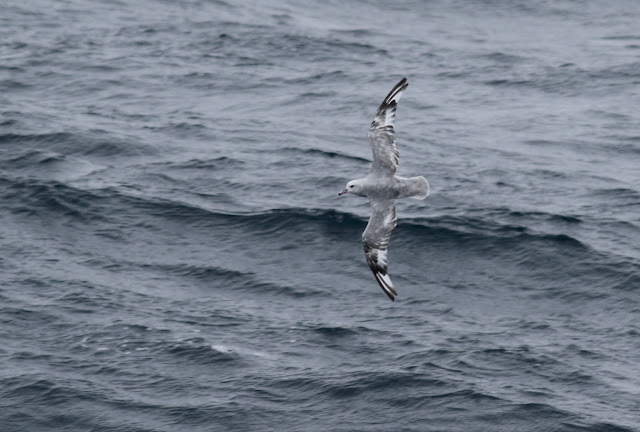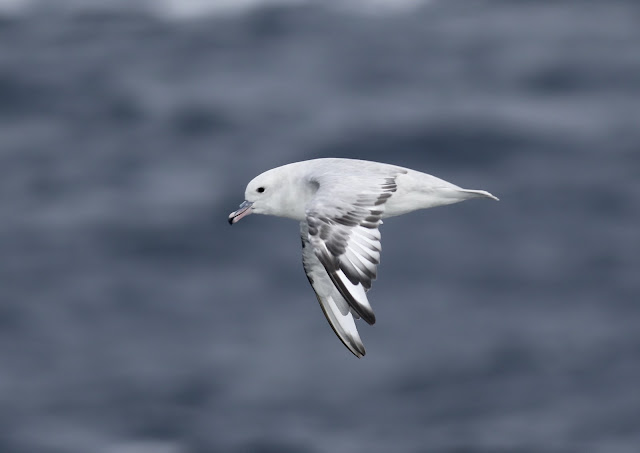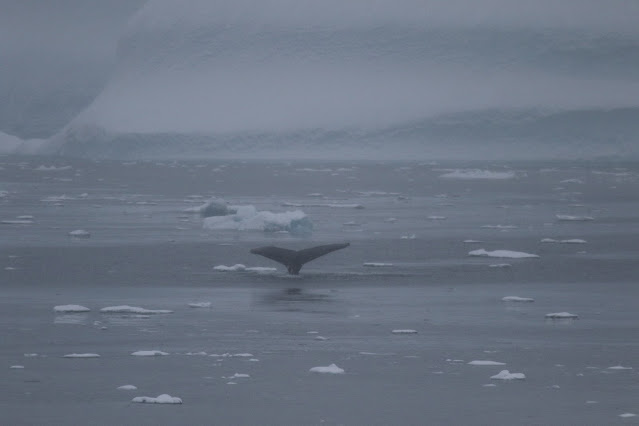I had a hard time leaving the deck of the ship even for the delicious meals. The birding was not necessarily fast and furious but there was a constant flow of 1-2 birds and I didn't want to miss any of the more rare birds like the Kerguelen Petrel which I know was a long shot. Spoiler alert, we never got one.
Gray-headed Albatrosses made some closer passes allowing for better study.
We started getting good looks at the White-chinned Petrels which are eye-popping birds.
The Soft-plumaged Petrels kept fairly distant but they are obvious because of the dark underwings reminiscent of a Fea's Petrel.
I started to realize that the Southern Giant Petrels would be one of the few species that would be with us the whole trip.
Matt seemed to favor the bridge of the ship for a couple reasons. You can see any birds that are flushed from the front, it was warm and windless and you get a wider view. Plus Matt is more of a people person than I am and enjoyed chatting up with the other passengers. Whereas I favored the back, mainly because I was looking to photograph the birds without glass in the way and usually there was some wind protection. Also, I liked having my mask off and taking in the fresh air. Lastly, there seemed to be some species that would come up the wake of the boat and follow for a while. Next time we go on a trip together, we vowed to bring walkie-talkies so we can share any good birds in more real time. There was no phone reception out there.

Blue Petrel was one of the species I got on in the back that unfortunately I was not able to get Matt on. I did run up to the bridge but by the time we got back to the aft it was gone. Even the looks I got were sub-standard and fleeting. Blue Petrels look and fly a lot like the Prions we subsequently saw but they have white tipped tails and also no white supercilia like the prions.
Blue Petrel
The Prions on the other hand were more accommodating and stayed with the boat for good looks.
Antarctic Prions look a little beefier than the Slender-billed Prions but the best field mark is the face mask which is thicker and gives it a darker look overall.
Note the dark tip to the tail compared to the Blue Petrel.
Slender-billed Prion - the weather was a little gray but the fact that all these birds are all blue-gray gives the impression that I was shooting black and white.
Prions dancing in the wind.
Matt had a Light-mantled Albatross up front which would have been new for me so up I went. As I was waiting, I read the description in my App and it said "Does not usually follow ships for long periods, but will often come up close, especially around the bow and bridge".

Light-mantled Albatross living up to its description, it made multiple passes up near the bridge. It blows my mind that depending on the species of Albatross, you can reliably find them either in the back or front of the ship.
Light-mantled Albatross
Slender-billed Prion
Black-bellied Storm-petrel! I was so excited to see these and then I quickly realized they were quite common.
I believe this was a Minke Whale fin. Humpback Whale fins have a bump on the forward slope of the fin. We saw Fin and Sei Whales too but they have more hooked looking fins.
Southern Fulmar! These were similar to their northern brethren but the bills were more pink than yellow.
Cape Petrel! What a stunning bird!
Cape Petrels
Southern Fulmar
There is something more gentle and friendly looking about Southern Fulmars compared to the Northern.
Of course the Black-browed Albatrosses were still with us as they would be most of the trip.
The water was getting colder and then we started to see ice bergs!
I have seen ice bergs before in Alaska among other places but it still is quite surprising and awe inspiring when you do see them in person.
I was also a little surprised to see Humpback Whales tailing amongst the bergs. I have surfed with them in Hawaii and now floated by their side in Antarctica. What an amazing species.
Crabeater Seals were a new species for me. They have slender up-turned noses and can frequently be seen amongst the bergs.
It started to get dark as we settled into a snow shower and we went in for a delicious meal while we floated by ice bergs bigger than our boat. A truly awesome experience.

